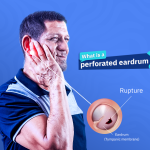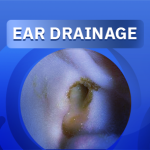mastoiditis
Despite the limited public awareness of the severity of ear decay (mastoiditis), it remains a serious medical condition. Mastoiditis is an infection that affects the mastoid bone, which is located behind the ear and resembles a honeycomb structure filled with air pockets surrounding the middle and inner ear. This condition often results from an untreated middle ear infection.
Ear bone decay (Ear decay) can affect both adults and children, but it is more common in children.
In this article, we will explore all aspects of Ear decay in detail, including:
- What is mastoiditis?
- Causes of mastoiditis
- Symptoms of mastoiditis
- How mastoiditis is diagnosed
- Treatment options
- Prevention methods
- Potential complications

What is Mastoiditis?
Mastoiditis is a serious bacterial infection that affects the mastoid bone located behind the ear. This spongy bone plays a vital role in protecting the ear and regulating pressure in the middle ear.
The infection typically arises from a prolonged, untreated middle ear infection. In severe cases, it may spread to the meninges or even the skull.
Causes of Mastoiditis:
Several factors can lead to Ear decay, including:
1. Ear Infections:
One of the most common causes. When not treated properly with antibiotics, the bacterial infection can spread to the mastoid bone. Stopping antibiotics prematurely may also lead to recurrence and worsening of the condition.
2. Abnormal Growth of Skin Cells (Cholesteatoma):
This is an abnormal skin growth in the middle ear that can block the ear and promote bacterial buildup, leading to infection and bone decay.
Symptoms of Mastoiditis:
Common symptoms include:
- Redness around the ear
- Pain behind the ear
- Headaches
- Discharge from the affected ear
- Protrusion of the ear
- Hearing loss in some cases
- Fever
- Fatigue and irritability
Diagnosis of Mastoiditis:
Diagnosis begins with a thorough examination by an ENT (Ear, Nose, and Throat) specialist using an otoscope to view the ear canal and eardrum. Additional tests may include:
- Blood tests
- X-rays or CT scans of the head
If symptoms suggest complications such as a brain abscess, further imaging like CT or MRI scans may be required. If meningitis is suspected, a lumbar puncture (spinal tap) might be performed to analyze cerebrospinal fluid.
Treatment of Mastoiditis:
If the infection does not respond to antibiotics or if complications like bone erosion occur, surgery may be necessary. This could involve a mastoidectomy, where the infected portion of the mastoid bone is removed. However, extensive surgery might affect hearing ability.
Postoperative Care Tips:
- Keep the surgical area dry; use earplugs or petroleum jelly-coated cotton during bathing.
- Avoid strenuous activities and air travel for several weeks.
- Attend all follow-up appointments.
Seek medical attention if you experience:
- Severe ear pain
- High fever
- Excessive discharge or bleeding
- These could indicate postoperative complications or infection recurrence, and some patients may require a second procedure.
Prevention of Mastoiditis:
Due to the serious nature of the condition, prevention is key:
- Promptly treat any ear infections.
- Do not stop taking antibiotics early—even if symptoms improve.
- Maintain good hygiene, especially hand washing.
- Avoid close contact with infected individuals.
Complications of Mastoiditis:
If left untreated or improperly managed, mastoiditis can lead to:
- Meningitis
- Sudden changes in vision
- Brain abscess
- Partial or complete hearing loss
- Inner ear nerve inflammation
- Skull bone infection
- Partial or full facial nerve paralysis
- Blood clots in sinuses that drain blood from the brain
Early medical intervention is crucial to avoid these complications. Do not hesitate to consult Dr. Saleh Al-Omari to ensure your ear and hearing health are in check.







